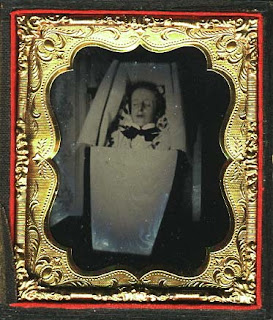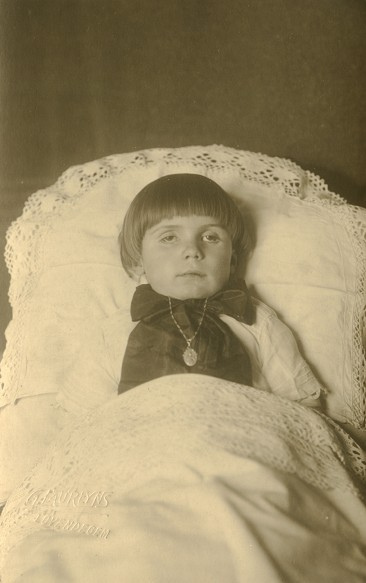Postmortem photography or memento mori, the photographing of a deceased person, was a common practice in the 19th and early 20th centuries. The photographs were considered a keepsake to remember the dead.
Child mortality was high during the Victorian era. For many children even a common sickness could be fatal. When a child or other family member died, families would often have a photograph taken before burial. Many times it was the first and last photograph they would ever possess of their loved one.
Many postmortem photographs were close-ups of the face or shots of the full body. The deceased were usually depicted to appear as if they were in a deep sleep, or else arranged to appear more life-like. Children were often shown on a couch or in a crib, often posed with a favorite toy. It was not uncommon to photograph very young children with a family member, most frequently the mother. Adults were more commonly posed in chairs or even propped up on something.
Child mortality was high during the Victorian era. For many children even a common sickness could be fatal. When a child or other family member died, families would often have a photograph taken before burial. Many times it was the first and last photograph they would ever possess of their loved one.
Many postmortem photographs were close-ups of the face or shots of the full body. The deceased were usually depicted to appear as if they were in a deep sleep, or else arranged to appear more life-like. Children were often shown on a couch or in a crib, often posed with a favorite toy. It was not uncommon to photograph very young children with a family member, most frequently the mother. Adults were more commonly posed in chairs or even propped up on something.









































































































































